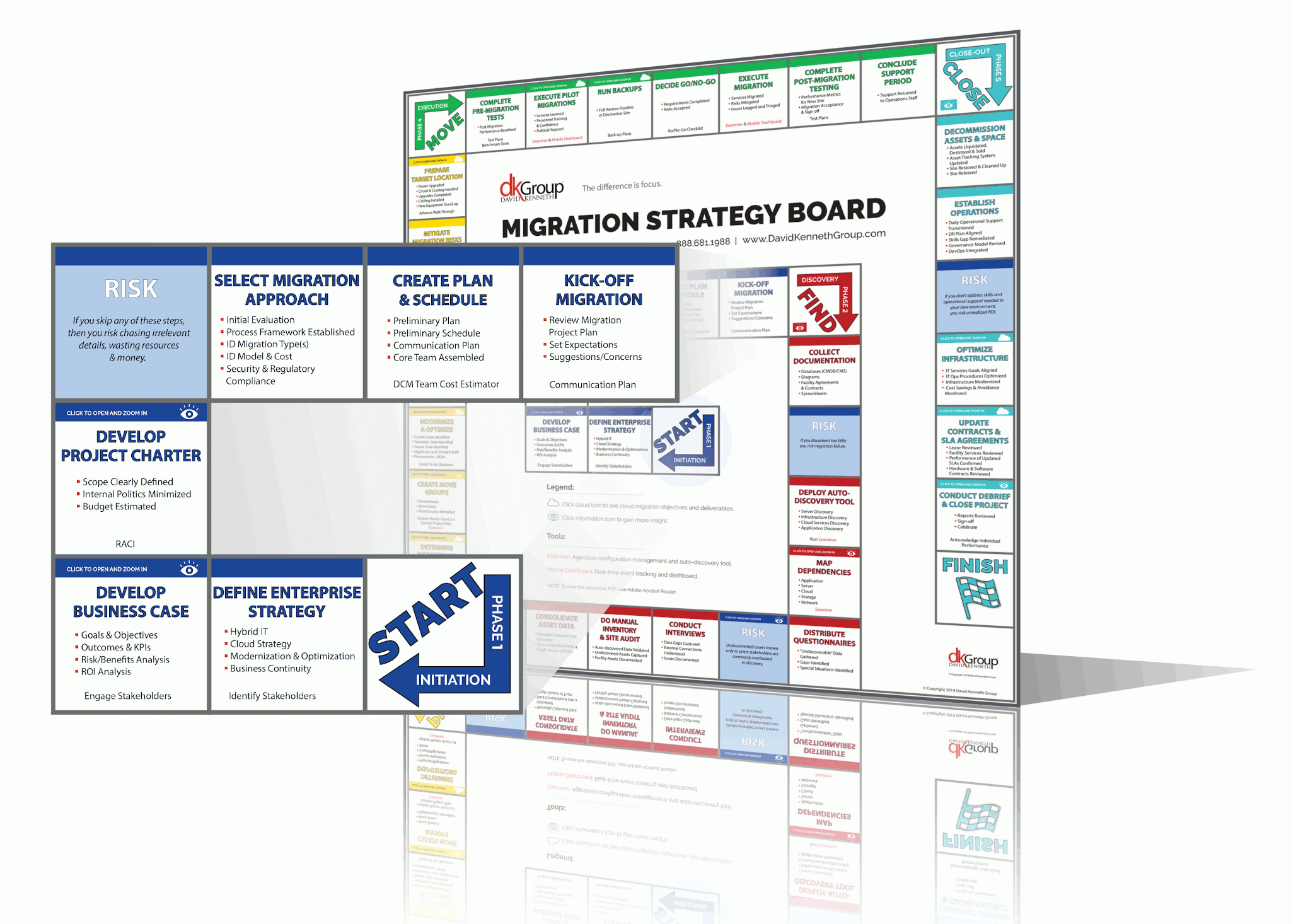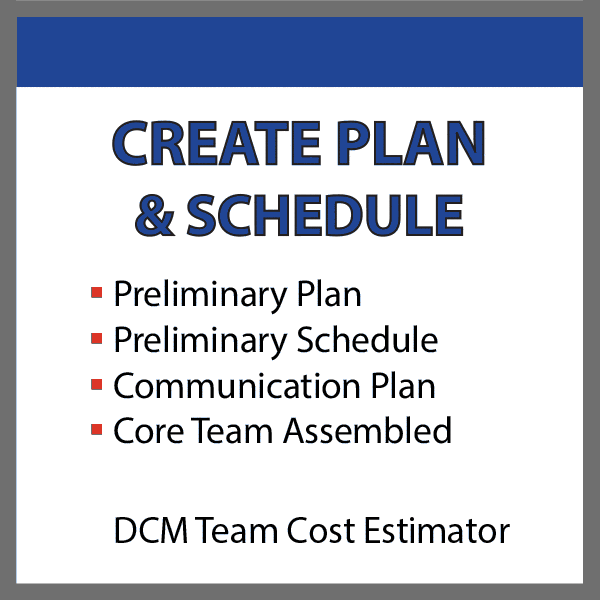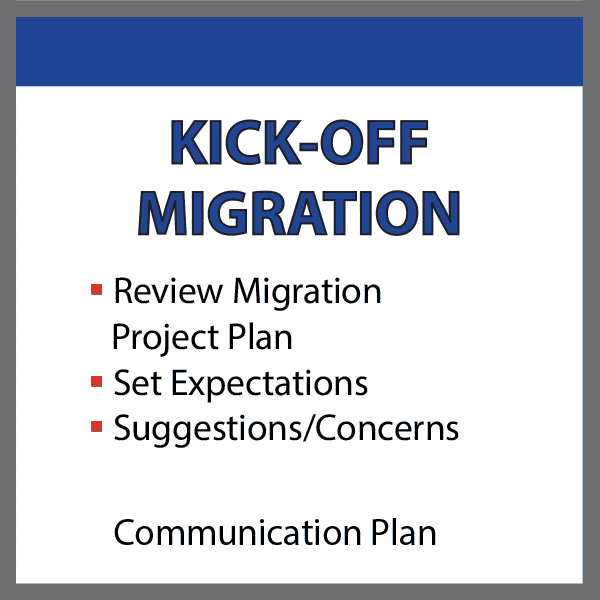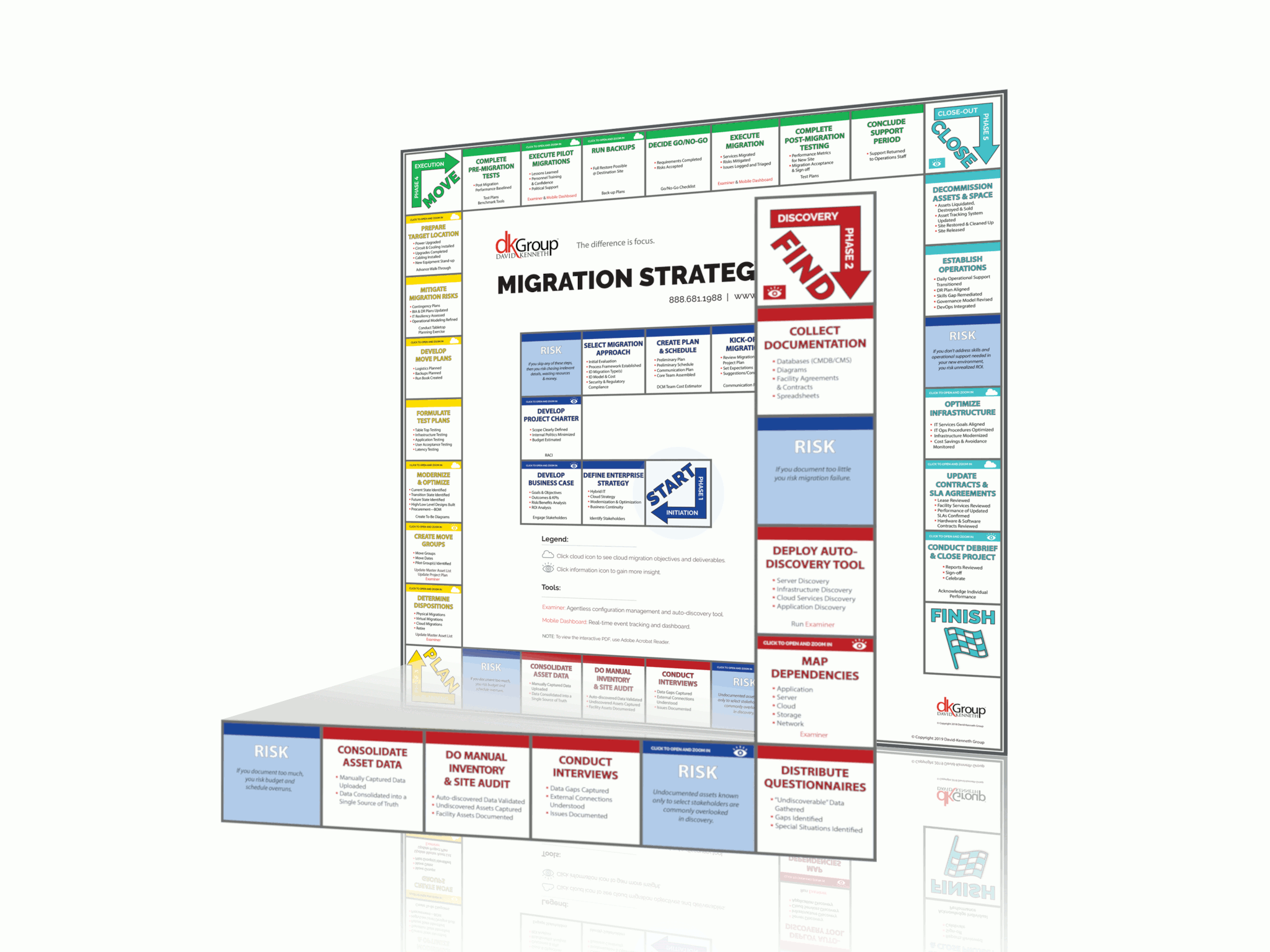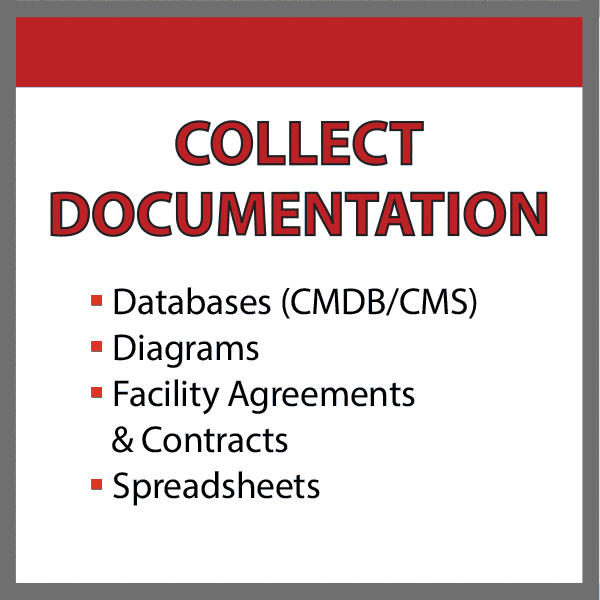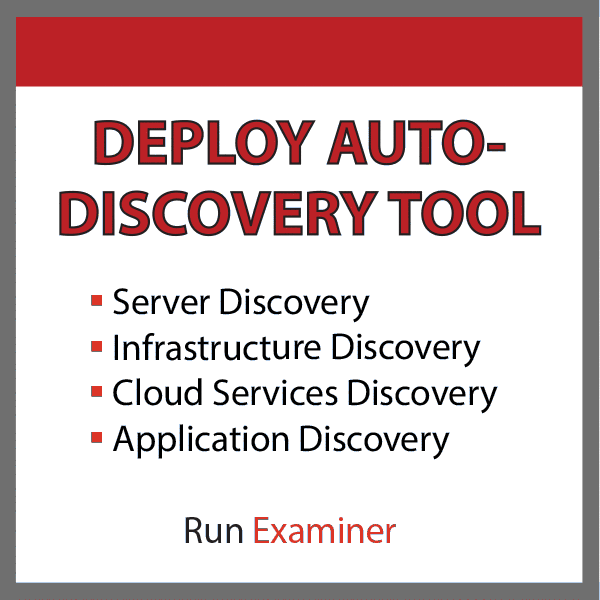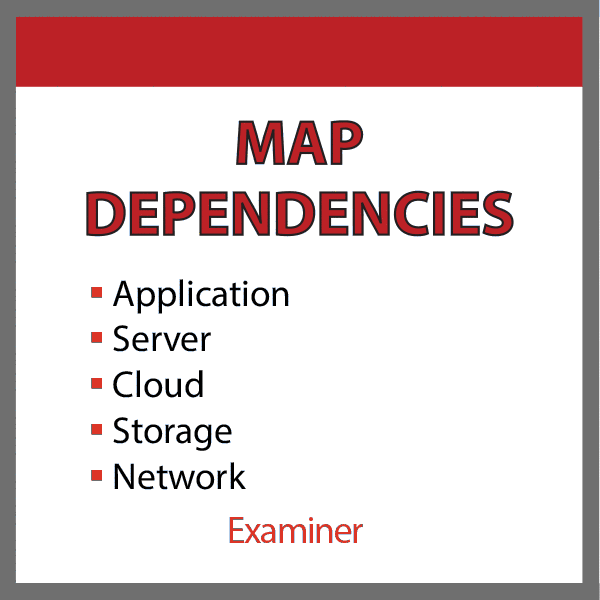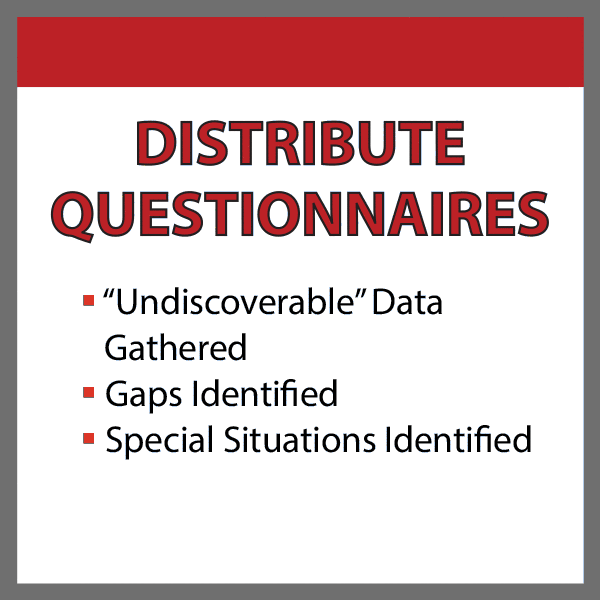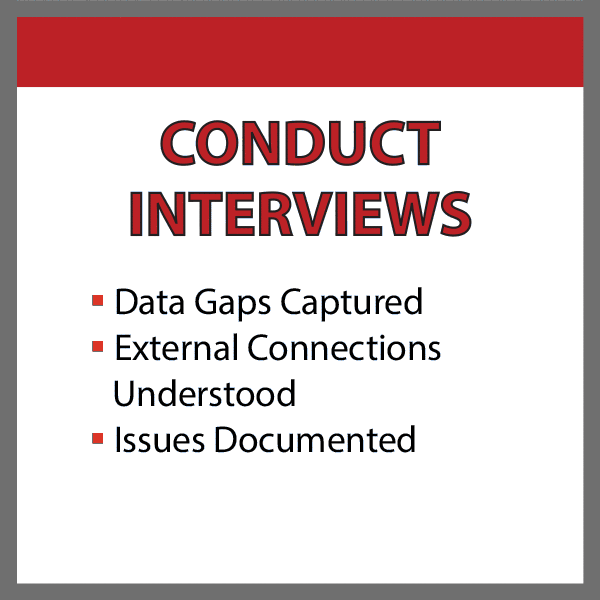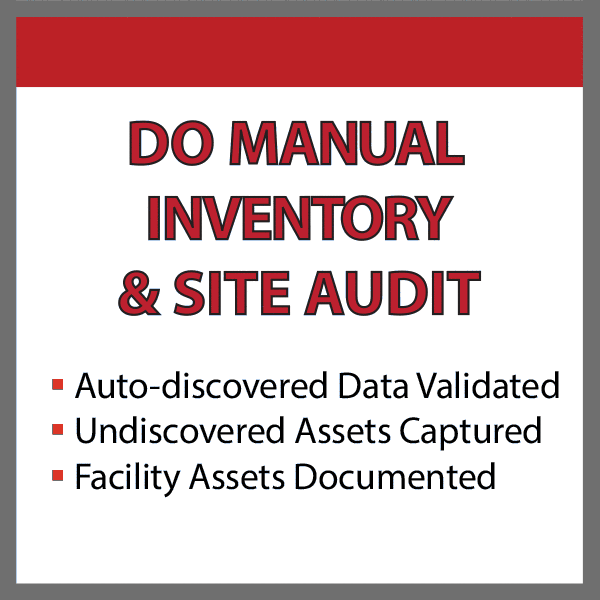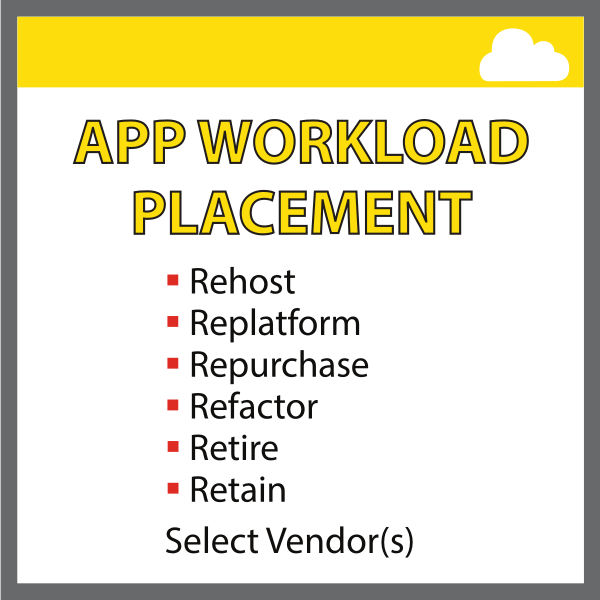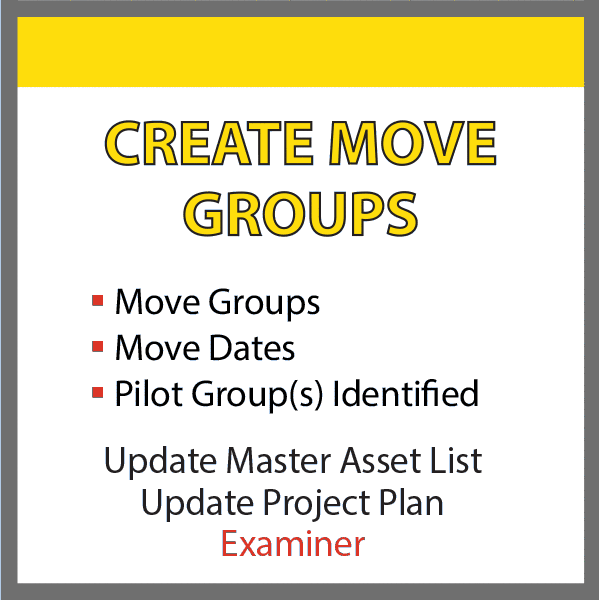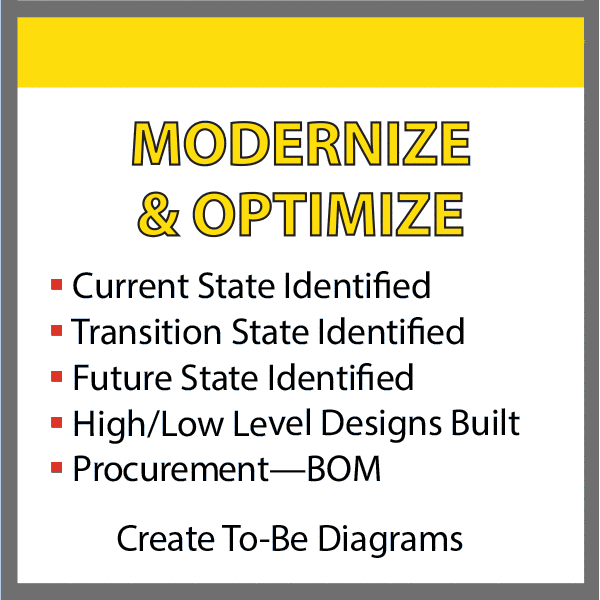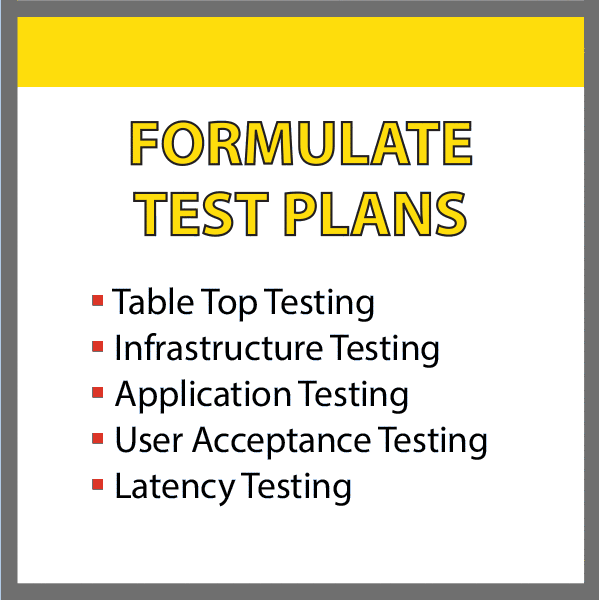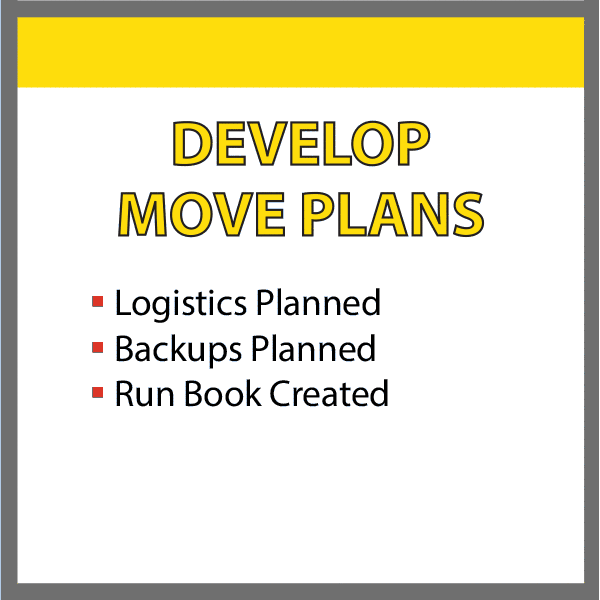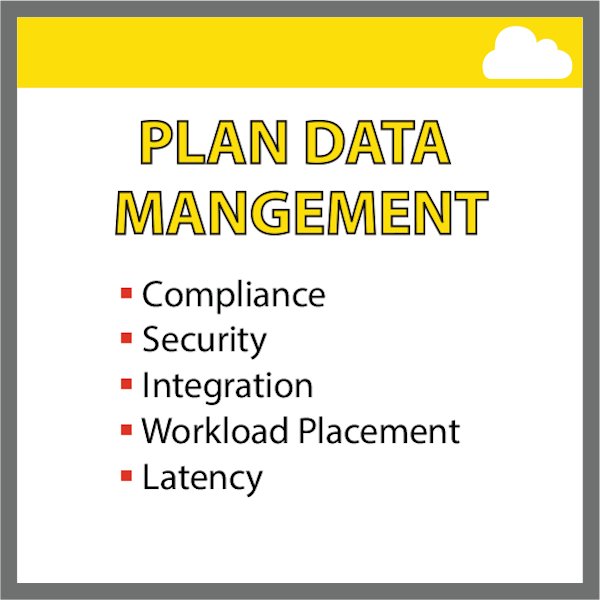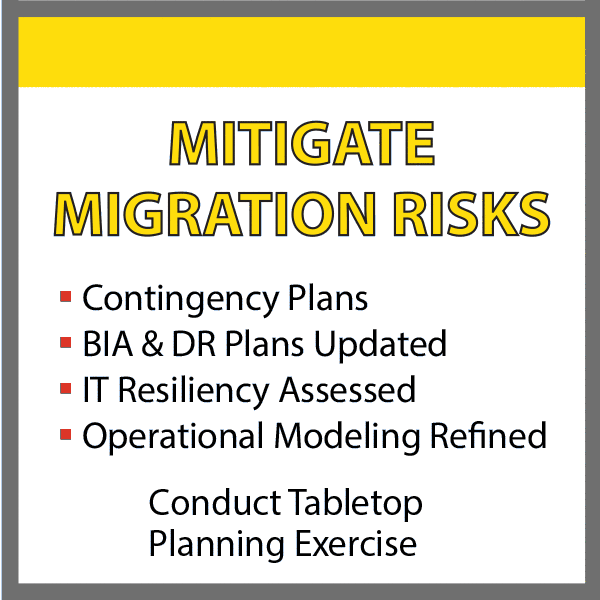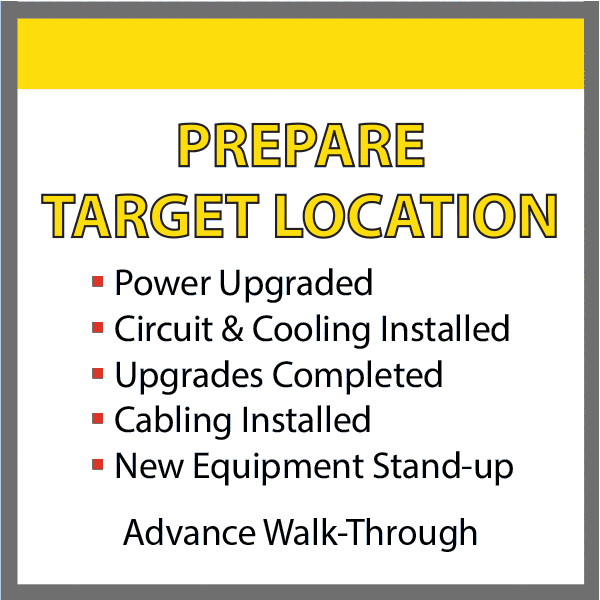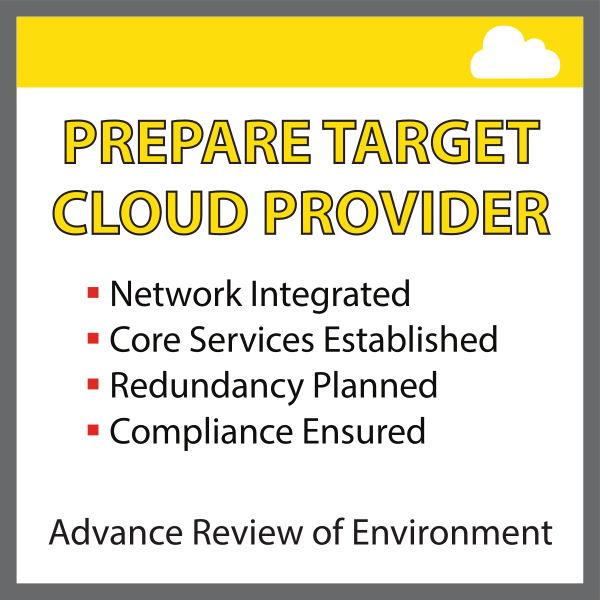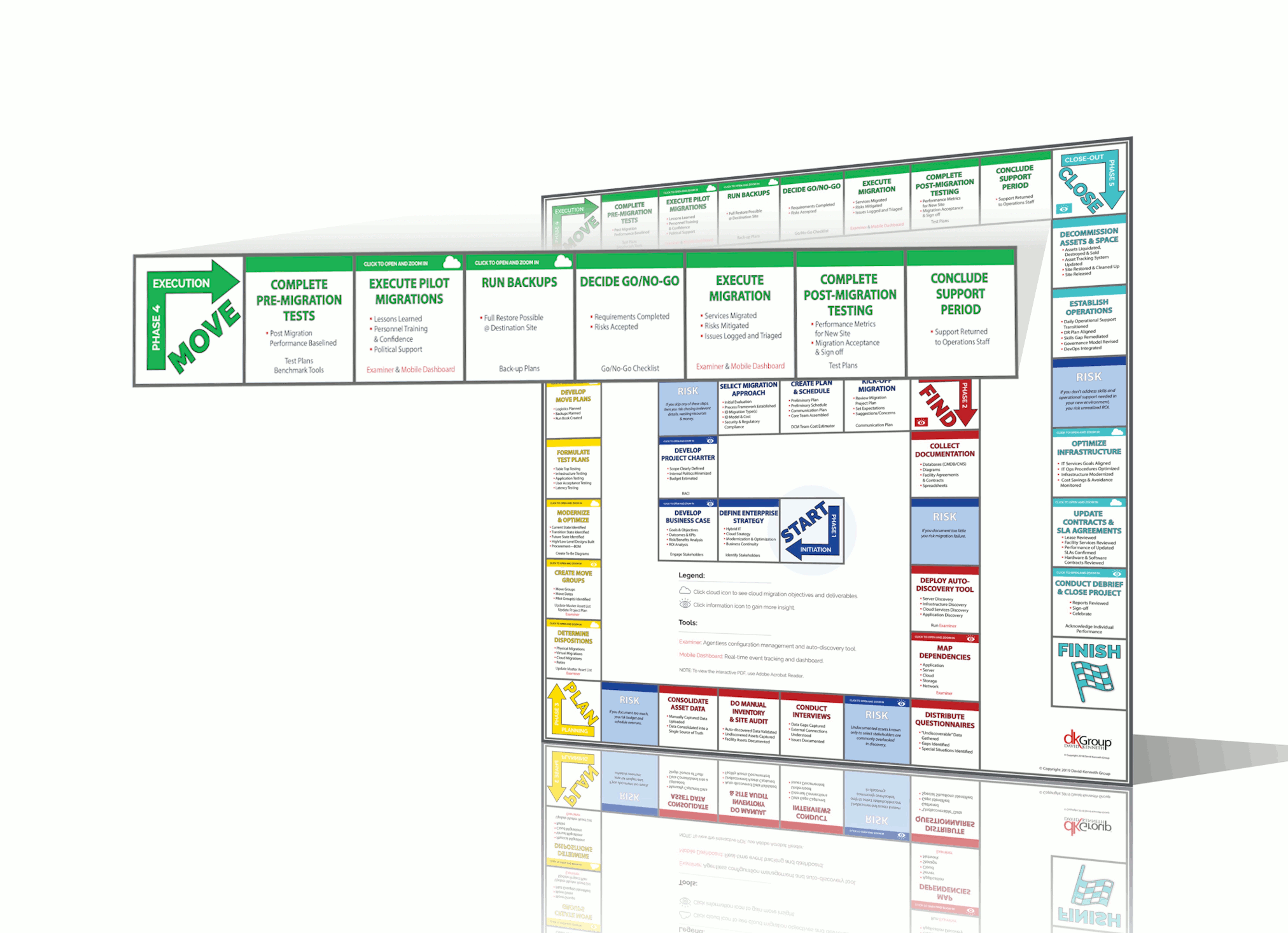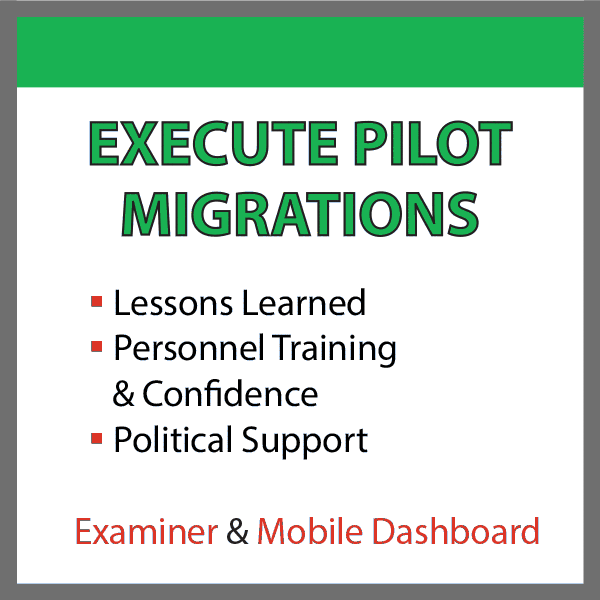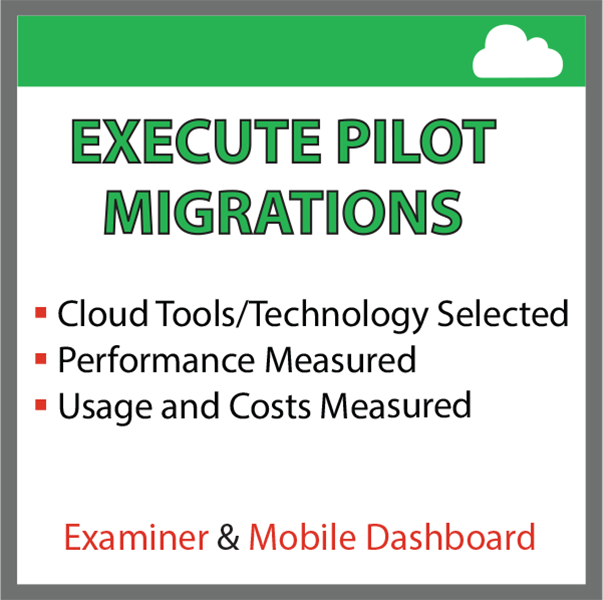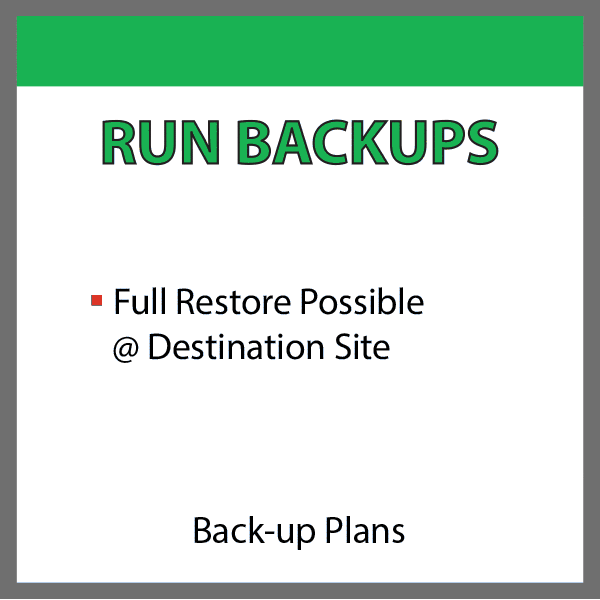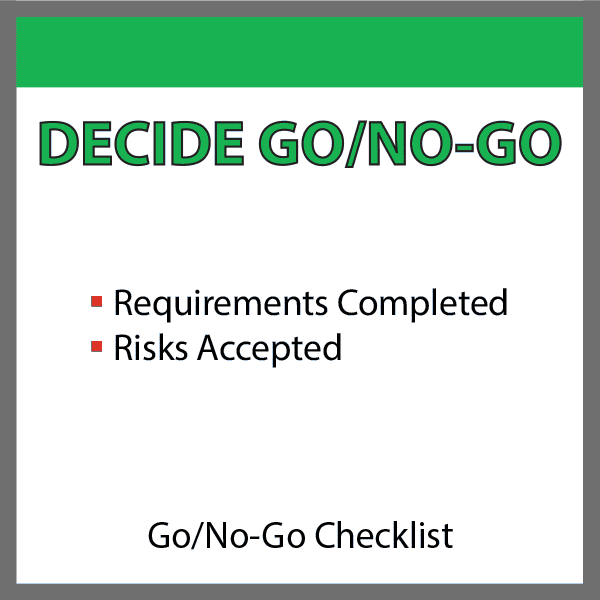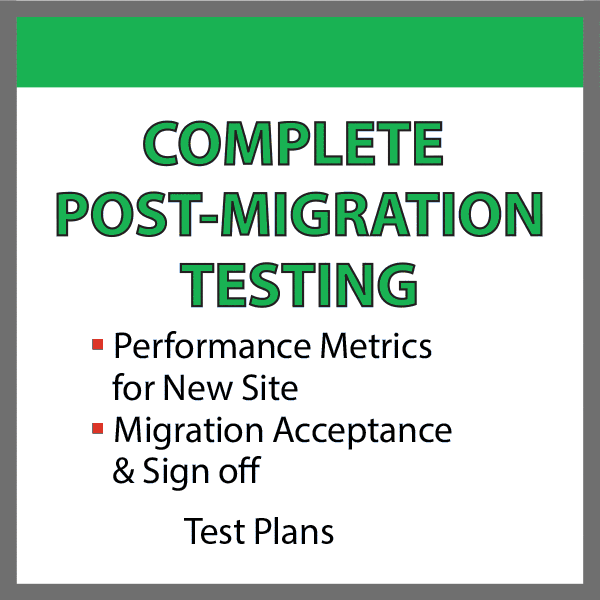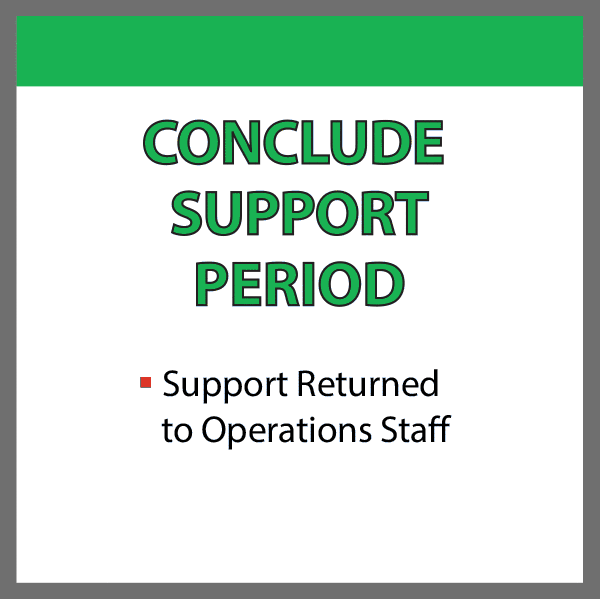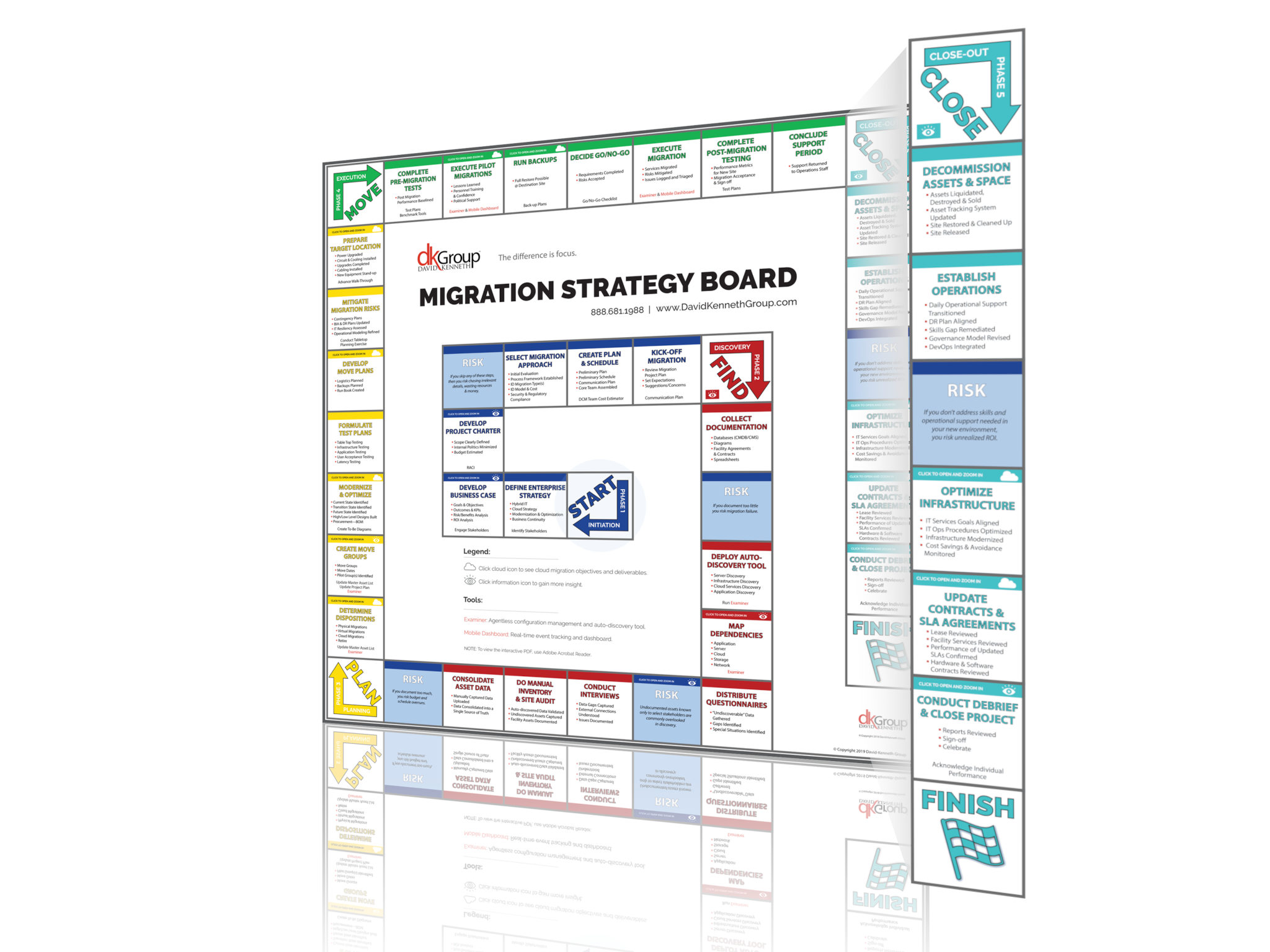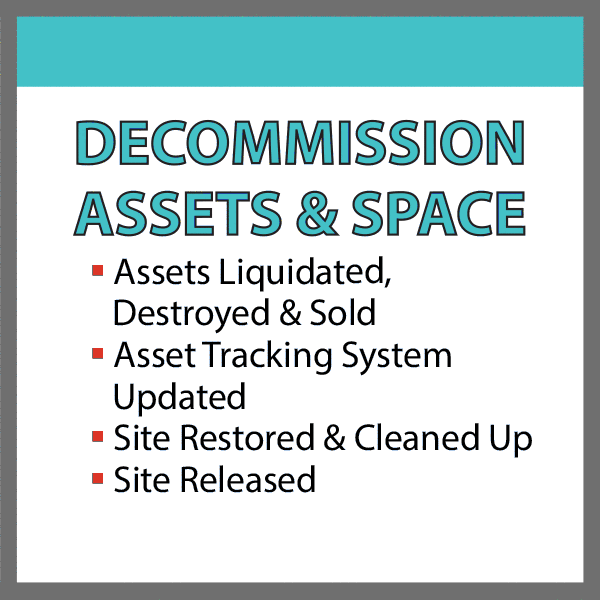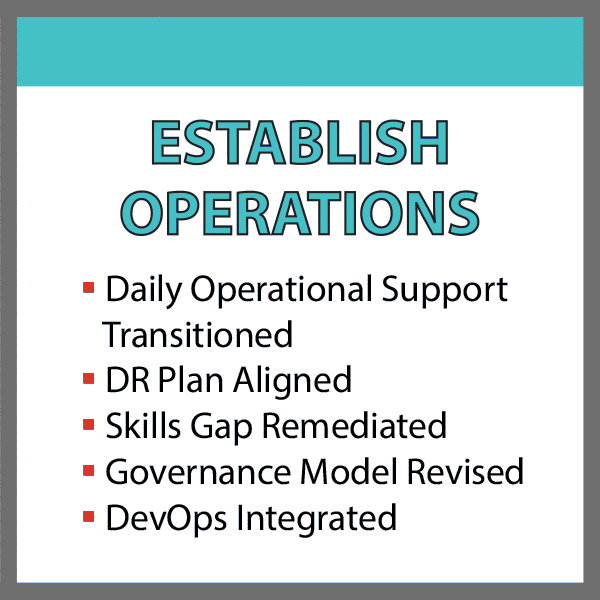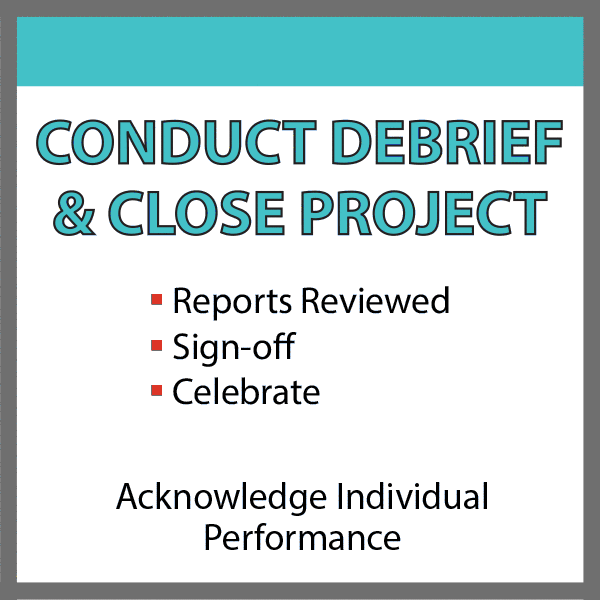Migrate physical assets and applications with zero operational disruption.
David-Kenneth Group’s Cloud and Data Center Migration Methodology (DKGm) is a step-by-step, proven process for planning and executing successful migrations. It is intentionally designed to support hybrid IT operating environments. Organized into five phases, it includes a baseline of more than 80 deliverables and two migration-specific toolsets. Below is a summary of each phase.
Five Methodology Phases
Phase 1: Initiation
The Initiation Phase launches the project and includes key objectives that lay the groundwork for success. It establishes the business case and project charter, organizes the project team, and is where a high-level migration strategy begins to take shape.
Your key objectives are:
Define enterprise strategy: Identify and document how the cloud and the data center can be a driver of key strategic business initiatives. Also, provide guidelines for cloud adoption, future modernization and optimization initiatives, and other agile technologies.
Select migration approaches: Given your current data center, cloud, colocation, and edge environments, identify potential migration types, taking into consideration security and regulatory compliance. Also include in your evaluation the project teams’ skill sets, which can be a significant cost driver if skill gaps need to be addressed.
Tips
- Solid goals are key.
- Set realistic expectations.
- Enforce project priorities. They will be tested.
- Communicate early and often with stakeholders.

The people in your organization and your customers are the most critical component of your migration. Communicating a solid plan will build confidence in the project and help address organizational concerns.
Phase 2: Discovery
The Discovery Phase identifies and documents your physical and virtual environment, inclusive of the application inventory and interdependencies. With a combination of auto and manual data collection methods, discovery identifies critical data at the business, application, and infrastructure layers.
The goal is to create a Master Asset Library (MAL), a repository for asset data and the authoritative source for the migration.
It includes the following objectives:
Collect documentation: Collect and consolidate all existing documentation from each business unit, via your databases (CMDB/CMS), diagrams, facility documentation, contracts, etc.
Deploy auto-discovery tool: Deploy an auto-discovery tool to capture data across your operating environment and into the cloud, from application workloads to data lurking at the edge.
Map dependencies: Identify interdependencies across the business, application, and infrastructure layers (network, cloud, compute, and storage). Also capture traffic flows between server, storage, and network assets daily, weekly, monthly, quarterly, and during other seasonal events.
Distribute questionnaires: Use questionnaires to collect otherwise “undiscoverable” information from server and application owners, resolve gaps from auto-discovery, and understand data points that machines cannot uncover, i.e., maintenance windows, application owners, hard-coded IP addresses, security concerns, etc.
Conduct interviews: Interview server and application owners to resolve gaps, address external partner and cloud connections, capture undocumented requirements, and address special situations brought to attention by the questionnaires.
Do manual inventory and site audit: Validate auto-discovered data and capture any assets that were not auto-discoverable. Gather information needed for the floor plan, rack elevation, and patch diagrams.
Consolidate asset data: Consolidate auto- and manual-discovery data into a single repository of truth, aka the MAL, and keep it current with regular scans, including the integration of operational activities with your change control board.
Tips
- Don’t get stuck in discovery. If you document too much, you risk budget and schedule overruns.
- Different situations require gathering different information. For example, some undocumented assets may only be known by select stakeholders.
- Do not forget to gather business information, i.e., TCO, ROI, SLAs, service windows, refresh.

Organizations discover undocumented IT assets and dependencies 100% of the time and typically experience a +20% variance between what is known and what is discovered.
Phase 3: Planning
The Planning Phase is where the team determines dispositions and performs move-group planning. The project plan and schedule evolve into the master plan for execution. During this phase a clear and consolidated picture of what will be necessary during the execution phase takes shape.
Here are the objectives:
Application workload placement: Use your discovery data to categorize and prioritize workloads to assess best-fit placements. Be certain to carefully weigh the implications of any application infrastructure modifications, i.e., rehost, re-platform, repurchase, refactor, retire, and retain. Evaluate and select a cloud service provider(s), ensuring organizational requirements, regulatory requirements, data controls, and compliance laws (GDPR, SOX, PII) are supported.
Determine dispositions: Use discovery data and business drivers to select the end-state disposition of physical assets and applications where it can optimally function and service the business. A hybrid mix of dispositions is typical as some systems are not cloud-ready or cloud-fit.
Create move groups: Analyze data in the MAL to understand interdependencies between transactions, services, IP, systems, applications, networks, compliance regulations, and hardware. Establish the move groups and move dates, and for a quick win, identify migration pilot group(s) to test and optimize, ensuring that at least one of every migration disposition planned is included.
Modernize and optimize infrastructure: Identify the current state of your infrastructure (as-is), the ideal future state (to-be), and the temporary transition state necessary between them. Align with business, budget, and timeline objectives to remediate necessary gaps and issues. Design (high-level and low-level designs), procure via a bill of materials (BOM), build, and configure your target state IT infrastructure environment.
Modernize and optimize cloud: Ensure you are fully leveraging the agility and elasticity of the cloud by updating operational processes and procedures.
Formulate test plans: Migration testing must validate that the new infrastructure and cloud services continue to deliver the same services and performance. Tabletop, infrastructure, application, user acceptance, and latency testing are optimal.
Develop move plans: Sequence all the move groups on a timeline for the migration. Review and verify the move plan schedule with the business stakeholders to ensure no negative impacts. Don’t forget logistical and backup planning.
Plan data management: Compartmentalize the data in the cloud environment to control access, ensure compliance requirements are in place/configured, and mitigate security risks.
Mitigate migration risks: Mitigate potential migration risks and issues with contingency dates, rollback plans, backup resources, a clear chain of command for quick decisions, enforced change control, and other elements that establish a robust fault-tolerant plan.
Prepare target data center locations: Upgrade and install in advance the power, circuits, cooling, and cabling infrastructure. Ready all the new equipment in the target location and validate it performs to specification via ready-for-use (RFU) testing before any migrations can begin.
Prepare target cloud provider: Configure the initial cloud setup for users, billing, resource hierarchy, access control, networking configuration, monitoring, security, compliance, and other basic set-up requirements before the first service is hosted to avoid future re-work and issues. Architect and design your target cloud environment much like you would your data center taking into account needs for high availability and redundancy. The cloud is not an excuse for poor design and is not a panacea with built-in redundancy. It must be designed.
Tips
- Creative timing and groupings can simplify or reduce costs.
- Procurement is often a critical path, especially for new circuits.
- Have a fallback window and a plan B. Do not be afraid to use them.

Smart simplicity and creative problem solving can resolve challenges—like unsupported assets, security gaps, and more—without disrupting the timeline or the budget.
Phase 4: Execution
A data center or cloud migration is 75 percent planning and 25 percent execution. Thorough planning and preparation are your best protection against migration risks. Pre-migration testing, pilot migrations, contingency rollback planning, and detailed cutover run books support the final go or no-go decision as the gatekeeper for execution readiness. Post-testing, acceptance criteria, and solid issue tracking ensure you do not walk away from the scene with a hidden bomb still ticking.
Below are the crucial steps to the Execution Phase:
Complete pre-migration tests: Utilize pre-migration testing as a baseline for post-migration performance, and identify errors or performance issues already present in the system. Course-correct before initiating a migration.
Execute data center pilot migration(s): Use pilot migrations as an opportunity to build support and trust internally by migrating low-complexity, low-risk workloads. Utilize the same key steps for large groups, optimizing processes and procedures, and documenting lessons learned. Similarly, migrate non-production environments before their production equivalent to refine and monitor the success of the cutover process.
Execute cloud pilot migrations: Test migration tools for status tracking, performance evaluation, and cost-effectiveness against the metrics defined in the business case. Map out any solutions for bottlenecks before they become an issue with a production system
Run data center backups: Establish and execute a backup plan to ensure a full restore is possible in the event of total equipment failure or data loss during migration.
Run cloud backups: Confirm that business-critical data and applications in the cloud are recoverable and within the allowable timeframe.
Decide go/no-go: Make a go/no-go decision about whether to execute the migration. This decision is made jointly by a designated team of decision-makers comprised of core project team members.
Execute migration: Execute the migration based on the migration plan and run book. Enforce a clear chain of command and responsibilities, capturing and managing any issues as they emerge.
Complete post-migration testing: Run infrastructure test scripts on storage devices and servers to ensure a healthy connected environment, then hand off for business user acceptance testing of databases and applications. Finally, closely monitor applications in production for the next 24 hours for any necessary performance tuning.
Conclude support period: Keep the migration support desk open to ensure full stabilization of the system and to address issues that can surface a week or so post-migration.
Tips
- Bigger moves can be easier than small ones.
- Migrate from steady-state to steady-state.
- Do not underestimate the test planning effort.

Triggering your contingencies and maintaining control can make a critical difference when the plan does not go as planned.
Phase 5: Closeout
After completing the complex undertaking of migration, the Closeout Phase can catch organizations by surprise with hidden risks and expenses, and it can take longer than anyone expects.
Below are the objectives:
Decommission assets & space: Track the inventory of remaining assets and develop a strategy for decommissioning them. Assets may be liquidated, retired, or resold. Review your lease agreement and building and facility services contracts. Establish a termination plan for services at the previous facility, restore and clean the site, and protect or destroy any sensitive materials.
Establish operations: Ensure that regular operations’ staff are familiarized with the new environmental responsibilities and skill gaps are remediated, and fully return operational activities to them. Also, integrate DevOps and update the governance model including infrastructure and data standards for the cloud. Define the customer interface for cloud services. To ensure business continuity, review DR plans with the newly transformed environment. Establish strong governance for cloud capabilities and attributes with future cloud applications, services, and monitoring capabilities in mind.
Optimize infrastructure: Continuously monitor, measure, and improve procedures and procedures to ensure responsiveness to business dynamics and needs. Do not hesitate to terminate cloud instances that are not fully utilized or no longer serve their purposes(s). Remember to identify KPIs as a baseline for ongoing infrastructure optimization, modernization, and cost control comparison.
Optimize cloud: Monitor cloud utilization and costs across internal and external platforms and develop a capacity-planning process that keeps the cloud rightsized. For ongoing cleanup and containment, establish audit levels and a cloud adoption framework.
Update contracts and SLA agreements: Manage relationships with stakeholders as you update contracts and SLA agreements, and ensure all details are reflected in new agreements.
Conduct debrief & close project: Change inevitably brings about lessons learned. Review the project with stakeholders and capture, document, and mitigate any issues. Take this opportunity to also document new design considerations discovered during the migration project. Review key success metrics, document findings, show savings, and package these data points into a debriefing report. Invite the sponsors to review and accept the deliverables.
Tips
- If the disaster recovery of primary critical systems is not working well, now is the time to correct it while the right team is assembled.
- Absorb valuable information gained from the migration project into the organization and tools.
- Publish lessons learned as a record for future migration projects.

Done right, significant value and expense can be saved in the closeout phase.
The Bottom Line about Cloud and Data Center Migrations
A data center and cloud migration can fundamentally transform how you deliver IT services and yield an attractive return on investment for IT and business operations. But, you need a rock-solid migration plan, tailored to your operating environment, to get you there.
The Migration Strategy Board is an interactive guide to our data center and cloud migration methodology. Adaptable to any environment, the Migration Strategy Board is organized into the five phases of a data center or cloud migration project. Move block by block to interact with the board and see different objectives and insights for data center and cloud migrations.
Migration Services and Tools
Move the right workloads to the cloud, consolidate infrastructure, and transform how you deliver IT services.

